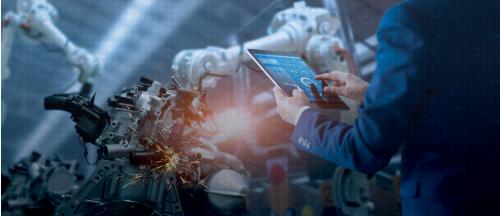Our recent analysis of the possible workforce impacts of artificial intelligence (AI) has introduced some new twists into the “future of work” debate.
The analysis, leveraging a novel method developed by Stanford Ph.D. candidate Michael Webb, suggests that AI’s effects may, for better or worse, have a distinctly white-collar tilt. That finding has impinged on at least one of the common views about automation.

A few readers—such as the excellent analyst Jed Kolko of Indeed—have suggested that our results may “muddy the water” by complicating the conventional wisdom that less-educated workers and struggling places are the most at risk of job loss from automation, as our earlier work on the subject has shown.
But there may be less to worry about here than Kolko fears. Contrary to the concern that our findings will divert attention away from the needs of lower-paid workers, we believe it will widen the discussion instead.

Doesn’t it actually help if affluent workers as well as lower-income workers may be affected by automation? Evidence suggests that U.S. political system tends to respond to the preferences of economic elites over those of average citizens. Given this sad reality, we think an expansion of the circle—while taking care to avoid any “robot apocalypse” rhetoric—might be valuable to the overall debate.
Moreover, while AI may reach into the upper part of the wage distribution (just as robotics and enterprise software have disrupted the middle and lower ends), that does not mean well-paid computer programmers and sales managers should henceforth become the central concern of the “future of work” discussion.
On the contrary, these affluent, usually highly educated workers are likely some of the most resilient workers in the economy, and so will need less help than others. It is quite possible that many of them will actually benefit from AI’s widespread deployment in the workforce. For example, as AI takes over certain predictive and analytic aspects of their jobs, it will free workers to become more efficient at creative and decisionmaking tasks that will remain uniquely human for the foreseeable future. In this regard, AI will make some of these already highly compensated workers more productive, likely raising their wages further. To this point, recent research by Edward W. Felten, Manav Raj, and Robert Seamans finds that advances in AI may lead to positive employment and wage growth for high-income occupations.
While not all high-wage workers will benefit from AI’s deployment, those who become displaced are better positioned than lower-wage workers. Most of these workers possess a bachelor’s degree or higher, which likely equipped them with many of the so-called “soft” skills—writing, working in teams, negotiation—that are in demand across many different industries. These workers also typically have broader professional networks, which can ease the transition process for workers.
Finally, high-wage workers already receive more supports to navigate a changing economy. For example, better-paid workers tend to receive more on-the-job training than other workers, as training tends to focus on managerial, professional, and supervisory roles. Literature suggests that because company-specific skills and general-purpose skills are usually complementary, employers are more likely to invest in training workers who have higher levels of general skills, as they believe it leads to a greater return on investment.
In view of all of this, it’s essential to keep our policy concern focused on the most vulnerable. To that end, the country needs to make significant new investments in supporting mid- to low-wage workers.
Our colleagues Martha Ross and Nicole Bateman have proposed a variety of policy recommendations for helping low-wage workers by improving their skills, addressing discrimination, and promoting economic and workforce development. Other ideas include incentivizing employers to offer more training for lower-wage workers, which should be coupled with a generous Universal Basic Adjustment program that would provide all displaced workers access to career counseling, training, and strengthened income supports. Wraparound services such as free or subsidized child care will be necessary to provide workers flexibility to leverage trainings and maintain full-time employment. Subsidized employment programs can help workers with barriers to employment, such as those with disabilities or a criminal record. Finally, robust job creation is needed to ensure there are employment opportunities for workers in left-behind places.
So, while our most recent analysis has expanded the range of workers who will likely be affected by technology-driven disruption, it doesn’t change the need to focus on improving America’s subpar workforce policies. Our analysis makes it clear that when it comes to navigating the future of work, we’re all in this together. It’s time to make sure our policies truly help all—especially the most vulnerable among us.








Commentary
AI will affect better-paid workers—but that doesn’t mean they’re the most vulnerable
December 5, 2019